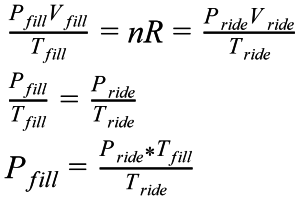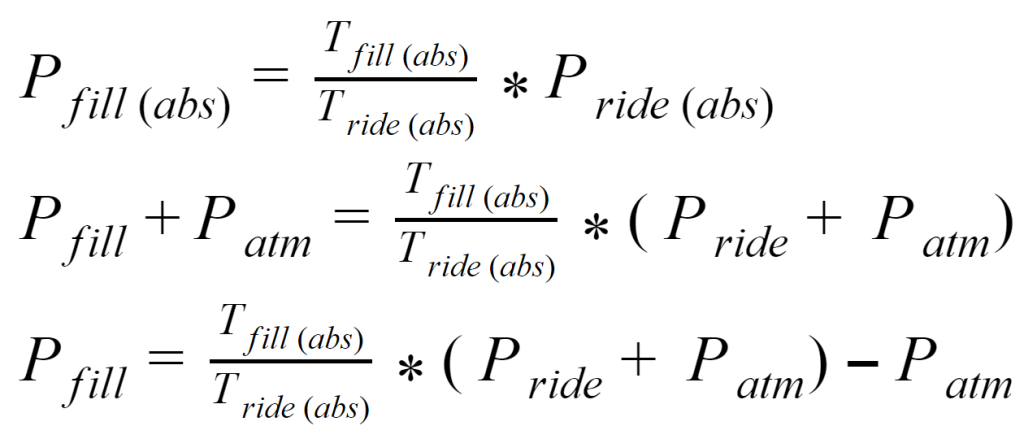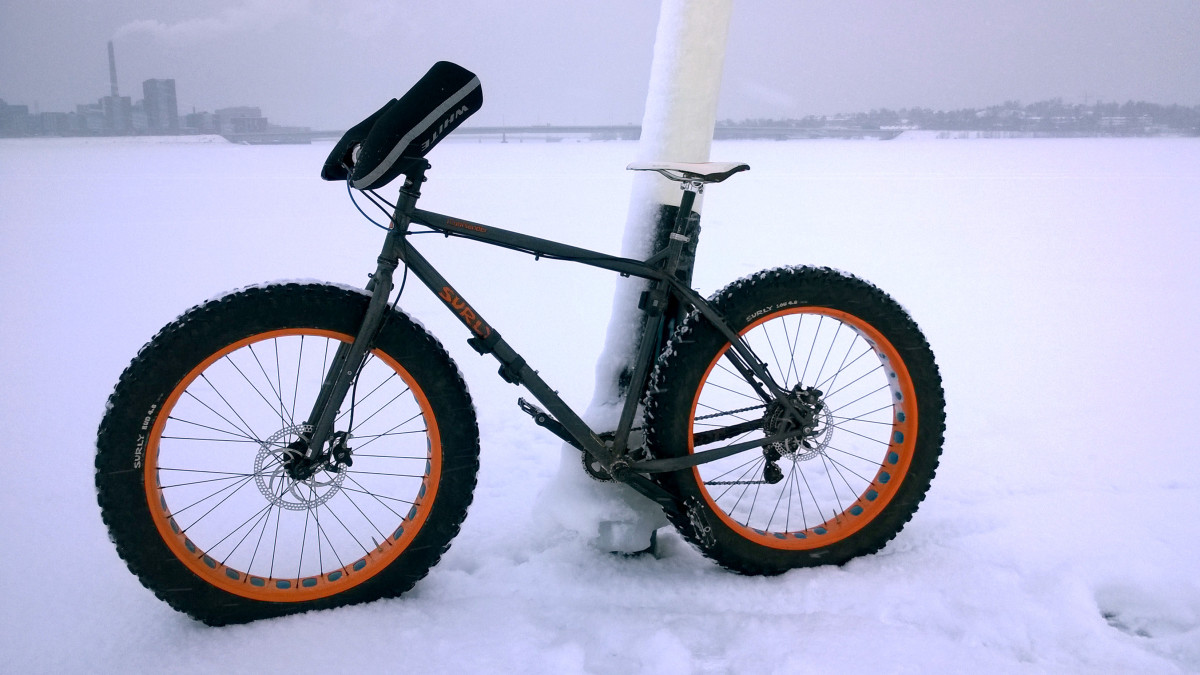I heard/read multiple instances of people pondering if they should or shouldn’t change their tire and/or shock pressure for winter. This got me thinking how much of a change there is and should I take it into account?
Science to the rescue!

In this scenario the amount of gas ( nR ) does not change and also the change in volume is not significant. We can then derive the following equation to calculate the necessary fill pressure to achieve a desired riding pressure, based on the temperatures of filling and riding.

The ideal gas law requires that we use absolute temperature and pressure values, so we must convert the temperatures to Kelvins and add reference (atmospheric) pressure to the equation.


For example if garage temp is +10C, riding temp is -10C and desired riding pressure is 0.45bar, filling pressure in garage should be 0.56bar. (interactive calculator below)
Without taking the temperature into account, i.e. 0.45bar filled in +10C, would result in 0.35bar in -10C or 0.53bar in +25C.
Another example, filling with 200psi @ +10C would result in : 184.84psi @ -10C and 211.37psi @ +25C.
As a conclusion, you probably should set fatbike tires by temperature and with higher pressures (e.g. rear shock), the change is not so significant, especially when the damper oil viscosity changes too

You are a hero. I’ve been looking for something like this for a while.
Thanks,
I too was looking for such a calculator, couldn’t find one, so had to make it 🙂
Thanks, you sire, are my Hero!